Every year the Civil Air Patrol (CAP) visits Washington DC to report to our legislators on the previous year’s CAP support to every state. That means a visit with every Senator and Representative (or his or her respective staff). For some states, it’s a full day, sometimes two days given the large number of representatives in the larger states. North Dakota has it easy with but one Representative and two Senators. Our meetings are typically done in less than three hours giving us a bit of time to take in the history of our seat of government.
In addition to each Wing (state) Commander, delegations often include other wing officers and cadets to help tell the story. In my tenure as North Dakota Wing Commander, I’ve made the trip alone or with other senior staff members, but this year, North Dakota Wing has a cadet member who is on the National and North Central Region Cadet Leadership staffs. Cadet Major Shanté Elsner, a member of the Fargo squadron. She and Cadet Major Noah Enders of Kansas Wing accompanied me on the North Dakota legislator visits this year. When we were finished with our meetings in the Senate and House office buildings, it was only a short walk to visit the U.S. Capitol, the Library of Congress, and the Supreme Court building. In the opening photo, Cadet Elsner gets her photo taken in front of the Supreme Court Building. It was a first time visit for all of us.
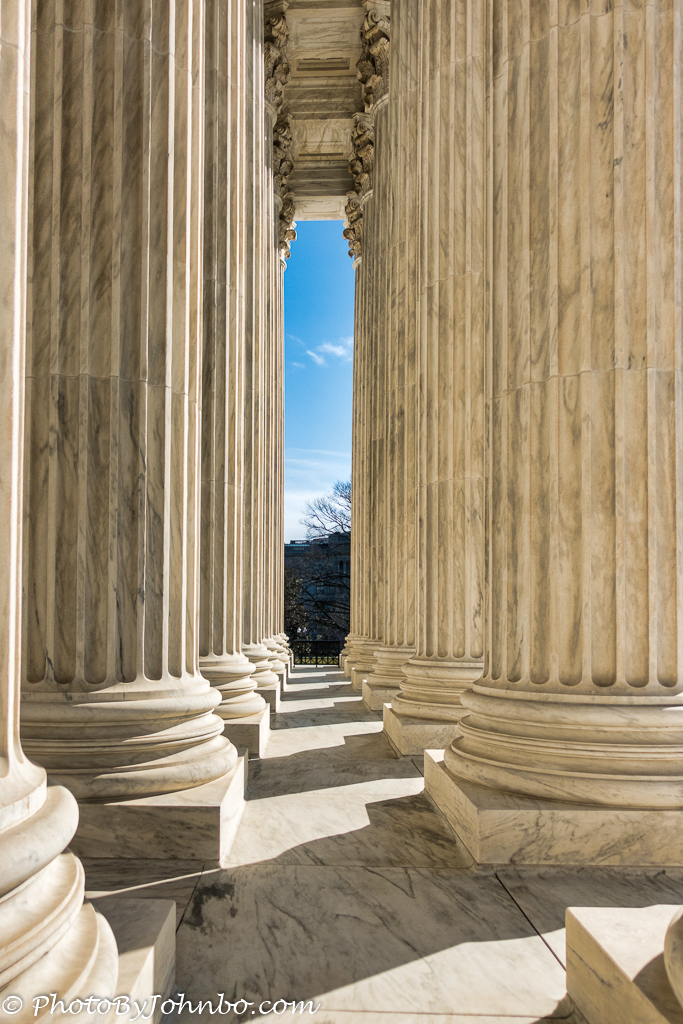 One amazing factoid I learned about the building is that even though the Judicial branch is considered an equal to the legislative and executive branches, it was 146 years before the branch was given its own building. The building with its single courtroom took three years to build and was completed in 1935. The marble used in its construction came from Vermont, Georgia, Alabama, and Italy.
One amazing factoid I learned about the building is that even though the Judicial branch is considered an equal to the legislative and executive branches, it was 146 years before the branch was given its own building. The building with its single courtroom took three years to build and was completed in 1935. The marble used in its construction came from Vermont, Georgia, Alabama, and Italy.
Former President William Howard Taft was appointed Chief Justice in 1921. He was the impetus for creating a separate building as the Supreme Court had been given space in the U.S. Capitol Building since 1801. In 1928, Congress gave the official approval and funding to construct a permanent home for the Supreme Court. President and Justice Taft would never see the completed building as he died of cardiovascular disease in 1930. In many respects this building is an edifice to his memory even though it doesn’t carry his name.
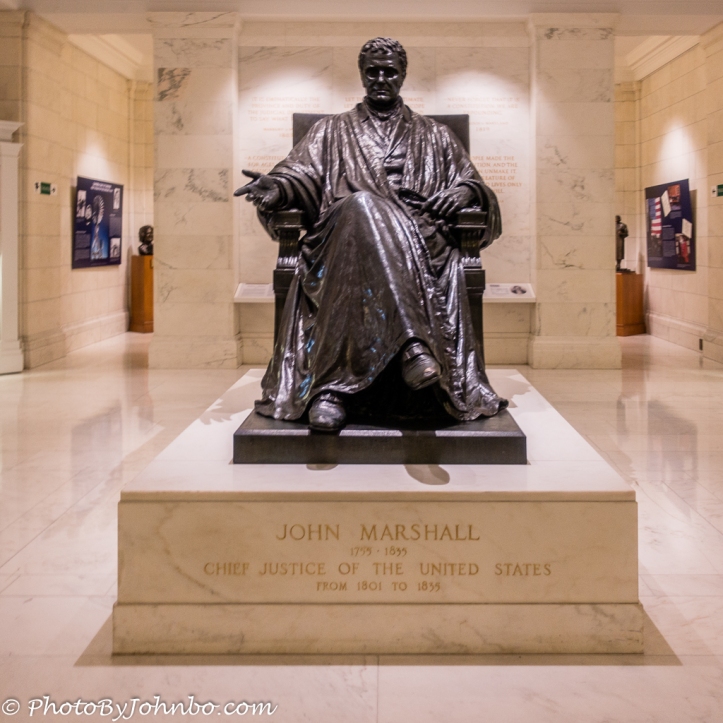 One of the central exhibits inside the building is a large statue of John Marshall, fourth Chief Justice of the Supreme Court who served from 1801 t0 1835. It was his leadership that is widely considered to have put the Supreme Court on the same level as the Executive and Legislative branches of our government. He is probably the most influential Supreme Court Justice in our history.
One of the central exhibits inside the building is a large statue of John Marshall, fourth Chief Justice of the Supreme Court who served from 1801 t0 1835. It was his leadership that is widely considered to have put the Supreme Court on the same level as the Executive and Legislative branches of our government. He is probably the most influential Supreme Court Justice in our history.
 Another important exhibit on the main floor is a section devoted to the life and background of Justice Sandra Day O’Connor, the nation’s first woman to serve as a Supreme Court Justice. Appointed by President Ronald Reagan in 1981, she retired from the court in 2006. Unlike Presidential and Congressional elected officials, Supreme Court Justices are appointed for life.
Another important exhibit on the main floor is a section devoted to the life and background of Justice Sandra Day O’Connor, the nation’s first woman to serve as a Supreme Court Justice. Appointed by President Ronald Reagan in 1981, she retired from the court in 2006. Unlike Presidential and Congressional elected officials, Supreme Court Justices are appointed for life.
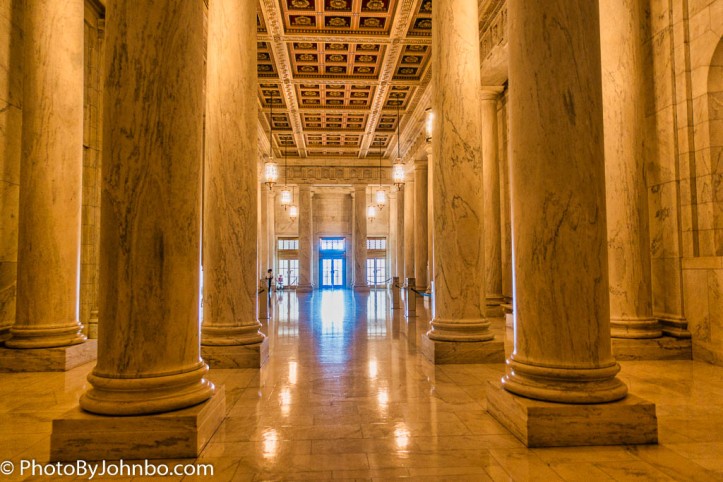 The interior of the building is just as magnificent in design as its exterior. There is only a single courtroom that I would have loved to photograph, but no pictures of the courtroom are allowed. We did sit in on a descriptive program held inside that famous courtroom where momentous events in American Jurisprudence were ultimately decided. In addition to the court room, the judge’s chambers, a legal office, a law library, a reading room, and even a basketball court (known as the highest court in the land) are part of the building’s interior design.
The interior of the building is just as magnificent in design as its exterior. There is only a single courtroom that I would have loved to photograph, but no pictures of the courtroom are allowed. We did sit in on a descriptive program held inside that famous courtroom where momentous events in American Jurisprudence were ultimately decided. In addition to the court room, the judge’s chambers, a legal office, a law library, a reading room, and even a basketball court (known as the highest court in the land) are part of the building’s interior design.
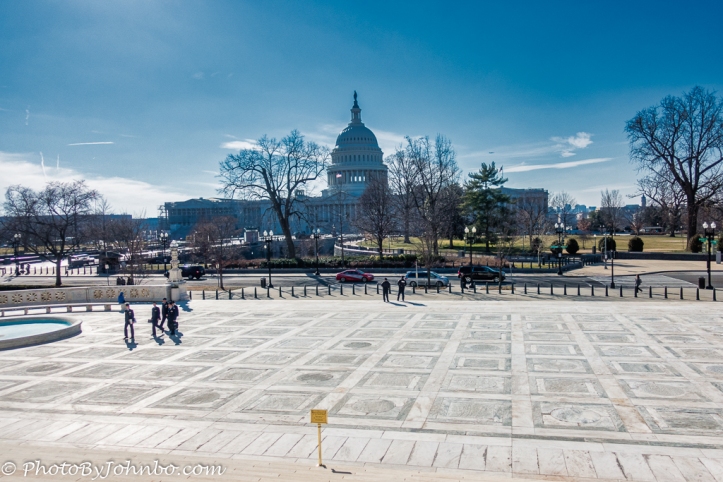 In 2010, the main entrance was closed for entry. A lower story entrance on the side is now the primary entrance, configured due to security concerns, with metal detectors and manned by a small Supreme Court Police Force. People can, however, still exit through the main doors at the top of the steps which look westward toward the U.S. Capitol across the street. The building is no stranger to controversy. In 2018, we planned a visit with a couple of cadets, but when we saw a large protest movement on the large terrace in front of the building, we opted to tour the Capitol instead. This visit, there was a single woman standing near the front of the terrace proclaiming loudly her displeasure at something recently decided. Truth is, I can’t remember what she was upset about. We easily went around her and found our way to the entrance on the south side of the building. With that, I submit for your review a gallery of images captured during our visit to the Supreme Court Building. In most browsers you can click on an image to enlarge it and scroll through the gallery.
In 2010, the main entrance was closed for entry. A lower story entrance on the side is now the primary entrance, configured due to security concerns, with metal detectors and manned by a small Supreme Court Police Force. People can, however, still exit through the main doors at the top of the steps which look westward toward the U.S. Capitol across the street. The building is no stranger to controversy. In 2018, we planned a visit with a couple of cadets, but when we saw a large protest movement on the large terrace in front of the building, we opted to tour the Capitol instead. This visit, there was a single woman standing near the front of the terrace proclaiming loudly her displeasure at something recently decided. Truth is, I can’t remember what she was upset about. We easily went around her and found our way to the entrance on the south side of the building. With that, I submit for your review a gallery of images captured during our visit to the Supreme Court Building. In most browsers you can click on an image to enlarge it and scroll through the gallery.
John Steiner

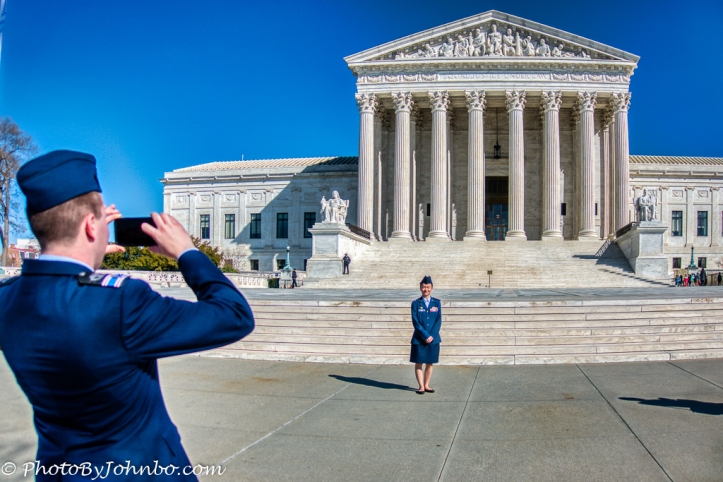











Beautiful photos of this historical building.
Thank you for the post, John!
Thanks for stopping by and commenting!
What a beautiful building! I know how it goes with the protestors, last time I was there it was during the Kavanaugh fiasco and there were protestors everywhere. The protests forced us to rethink our plans and stay away from the government buildings and focus on where we were going to eat. LOL
Yes, it was the Kavanaugh protesters that impacted us as well.